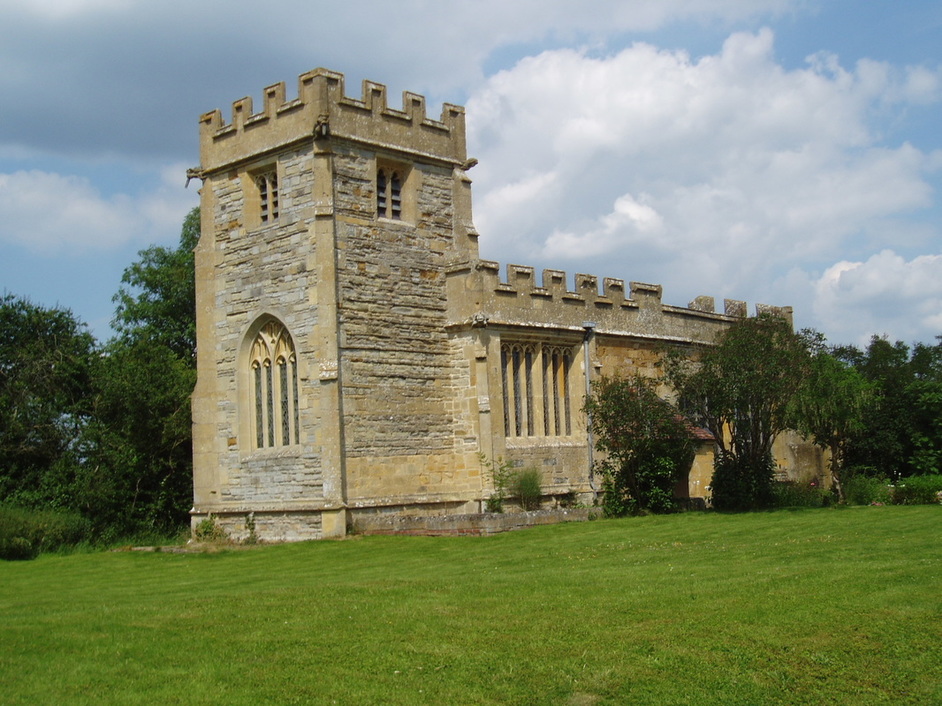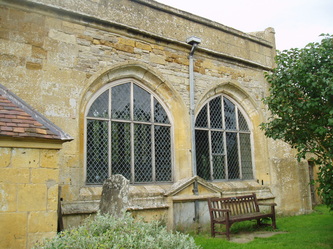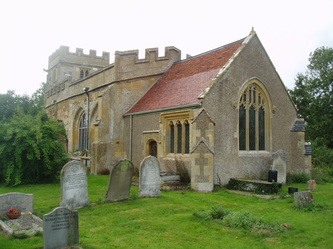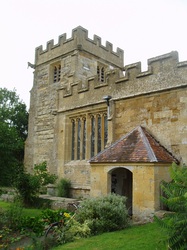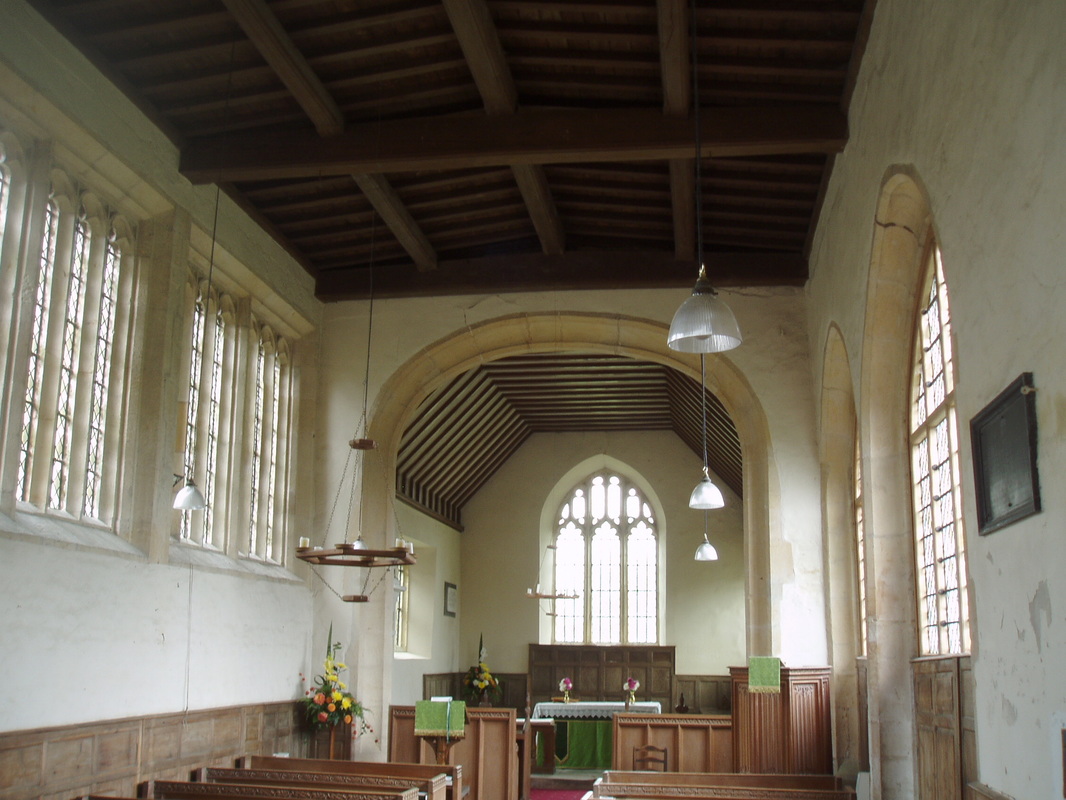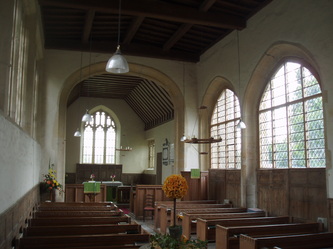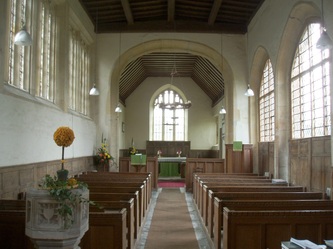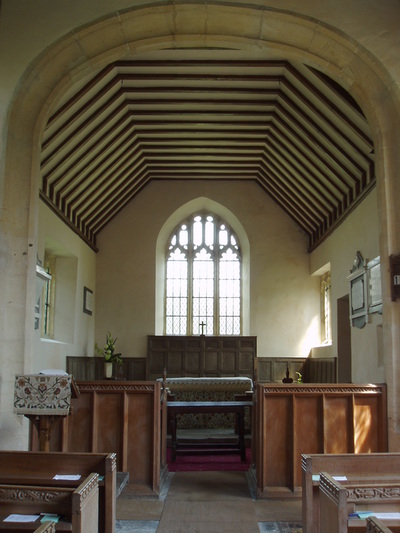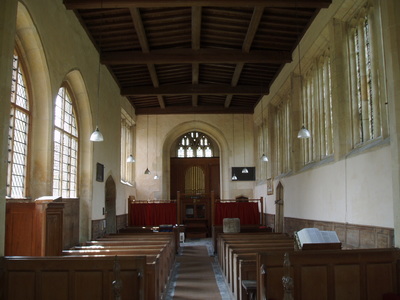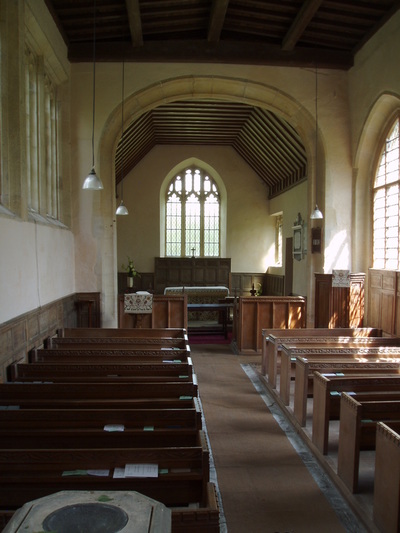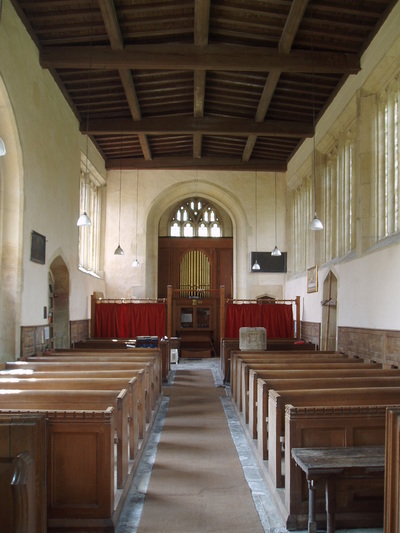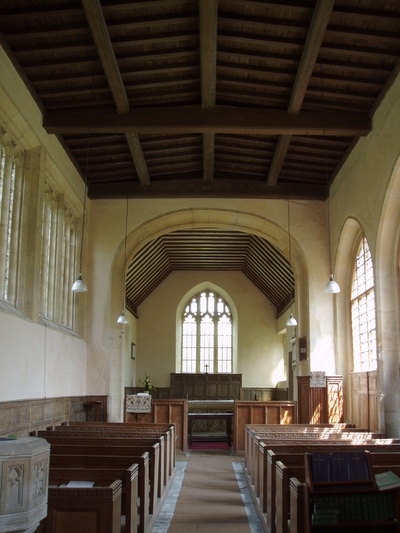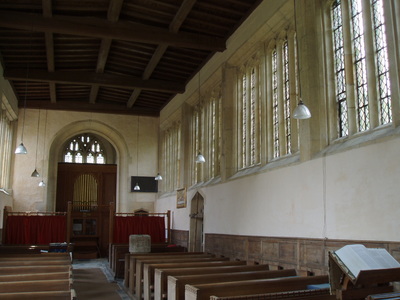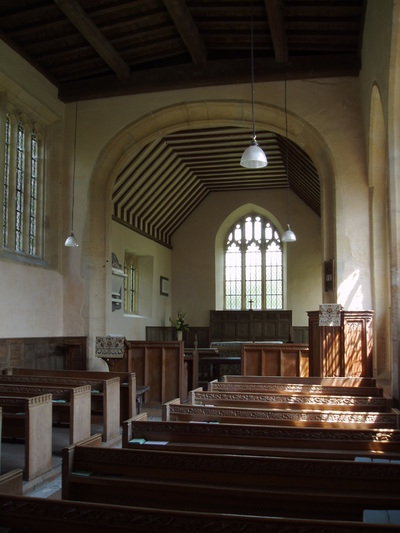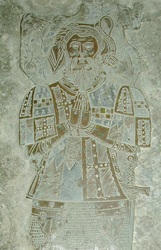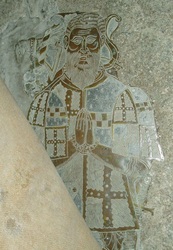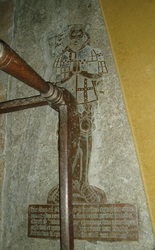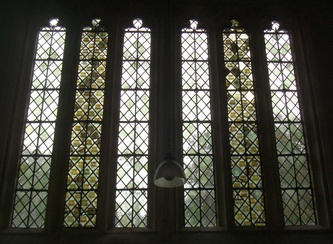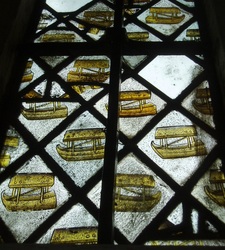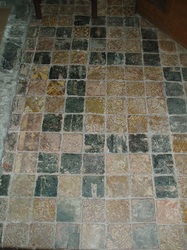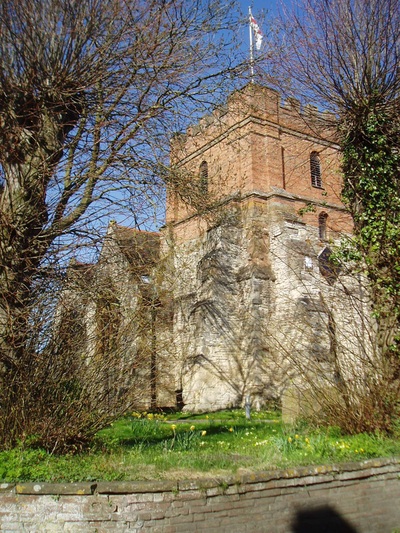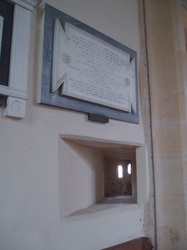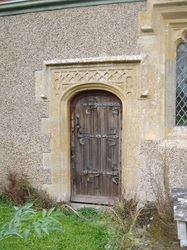Weston on Avon - All Saints
When I first came here at the end of a bike ride from Stratford upon Avon on a cloudy afternoon in 2006 I had no idea what to expect, other than this church would probably be locked. I had seen no images of it and knew next to nothing about it (sometimes doing one's homework first can spoil surprises and the thrill of the find, and this was a perfect example!). I didn't expect anything remarkable, and at first sight this small building with it's squat west tower does far more to charm than impress.
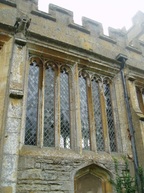
Curiously it didn't look like a Warwickshire church, having more of a Cotswold look with it's yellow stone and late 15th century battlements and gargoyles of a type one is more used to seeing in Gloucestershire, the reason for this being changes to the border between the two counties, since this church was indeed formerly in that county, and along with neighbouring Welford on Avon and Quinton remains part of the Gloucester Diocese.
Everything looks all of a piece, late 15th / early 16th century Perpendicular, judging by the large square headed six-light window on the south side. One of the oddest features externally has been caused by the disappearance of the former south aisle or chapel; seeing evidence of demolished aisles isn't that uncommon, and usually manifests in a walled up arcade, with arches and pillars more or less buried in later masonry, but here the two-bay arcade was glazed instead (a low wall forms the cill) leaving two abnormally huge clear-glazed windows flooding the nave with light. The base of the ancient churchyard cross remains nearby.
I imagined it would be locked without keyholder information and that would be that, but to my surprise the door yielded, but even more surprisingly I then found myself facing a wall that seemed to be composed mostly of glass! The entire north wall of the nave is filled by a sequence of four square-headed six-light windows (identical to the single example on the south side, suggesting something similar would have been planned there had it not been for the now missing chapel). There is so little space between each window that it appears from some angles that they are one continuous window, separated only by regimented thick and thin mullions, a truly remarkable effect! It is reminicscent of many late medieval clerestories, but to be used at ground level on such a large scale in so small a church must surely be unique.
Everything looks all of a piece, late 15th / early 16th century Perpendicular, judging by the large square headed six-light window on the south side. One of the oddest features externally has been caused by the disappearance of the former south aisle or chapel; seeing evidence of demolished aisles isn't that uncommon, and usually manifests in a walled up arcade, with arches and pillars more or less buried in later masonry, but here the two-bay arcade was glazed instead (a low wall forms the cill) leaving two abnormally huge clear-glazed windows flooding the nave with light. The base of the ancient churchyard cross remains nearby.
I imagined it would be locked without keyholder information and that would be that, but to my surprise the door yielded, but even more surprisingly I then found myself facing a wall that seemed to be composed mostly of glass! The entire north wall of the nave is filled by a sequence of four square-headed six-light windows (identical to the single example on the south side, suggesting something similar would have been planned there had it not been for the now missing chapel). There is so little space between each window that it appears from some angles that they are one continuous window, separated only by regimented thick and thin mullions, a truly remarkable effect! It is reminicscent of many late medieval clerestories, but to be used at ground level on such a large scale in so small a church must surely be unique.
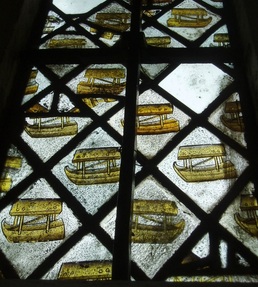
The interior was subsequently flooded with light, even in the late afternoon of the dull day I visited on. The 'glass cage' effect of the north side is further accentuated by the afforementioned former arcade openings on the south, giving this late medieval church as much the atmosphere of a Georgian interior than the Gothic.
There is no stained glass except for the original painted and stained quarries found in two of the lights on the north side, repeating a motif with a canopied boat , doubtless the rebus of a late medieval donor (I have seen these same quarries elsewhere).
The plain panelling in the chancel is 17th century, which could well be the date of this part of the building judging by some of the external features (along with the strangely round chancel arch). Otherwise the furnishings appear to be mostly early 20th century, simple but attractive with decorative carving and a linenfold-style pulpit.
At the east end of the nave are substantial sections of medieval tiled floor, some areas intact with two-toned dark and encaustic elements, and much use of heraldry, the surviving pieces showing this to have been of surprisingly high quality for such a small and rural building.There are also fragments of incised slabs and empty brass indents incorporated into the paving nearby.
The best pieces are to be found under carpeting in the chancel, either side of the altar, two small but good quality late Tudor brasses to Sir John Grevill (d.1546) and Sir Edward Grevill (d.1559), very similar in style showing a bearded figure in armour standing above an inscription tablet.
There is no stained glass except for the original painted and stained quarries found in two of the lights on the north side, repeating a motif with a canopied boat , doubtless the rebus of a late medieval donor (I have seen these same quarries elsewhere).
The plain panelling in the chancel is 17th century, which could well be the date of this part of the building judging by some of the external features (along with the strangely round chancel arch). Otherwise the furnishings appear to be mostly early 20th century, simple but attractive with decorative carving and a linenfold-style pulpit.
At the east end of the nave are substantial sections of medieval tiled floor, some areas intact with two-toned dark and encaustic elements, and much use of heraldry, the surviving pieces showing this to have been of surprisingly high quality for such a small and rural building.There are also fragments of incised slabs and empty brass indents incorporated into the paving nearby.
The best pieces are to be found under carpeting in the chancel, either side of the altar, two small but good quality late Tudor brasses to Sir John Grevill (d.1546) and Sir Edward Grevill (d.1559), very similar in style showing a bearded figure in armour standing above an inscription tablet.
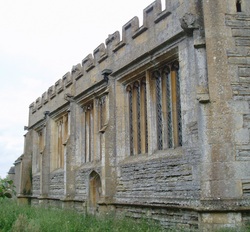
One final curious feature is the squint, which opens into the chancel at an extreme angle through a long splayed recess. The two tiny slits that light it would have revealed little to an outsider and appear to have been recut from another block, judging by the odd mishapen quatrefoil carved next to them. Stranger still, the barely visible openings are cut through the end respond of the former south arcade! This therefore must be a later alteration, probably 17th century when the chancel appears to have been rebuilt.
This small, neat and highly unusual church is a real little known gem. My enthusiasm alas wasn't shared by a couple who came in after me and didn't linger long, saying 'Not much to see in there'! I think they rather missed the point, this church doesn't reveal it's secrets unless one is prepared to seek them out, but will reward anyone who cares to look. Having arrived with few expectations I really loved this church, it has real charm, remarkably unusual features and a real sense of stillness and peace.
Photos & Text by Aidan McRae Thomson 2012
This small, neat and highly unusual church is a real little known gem. My enthusiasm alas wasn't shared by a couple who came in after me and didn't linger long, saying 'Not much to see in there'! I think they rather missed the point, this church doesn't reveal it's secrets unless one is prepared to seek them out, but will reward anyone who cares to look. Having arrived with few expectations I really loved this church, it has real charm, remarkably unusual features and a real sense of stillness and peace.
Photos & Text by Aidan McRae Thomson 2012
